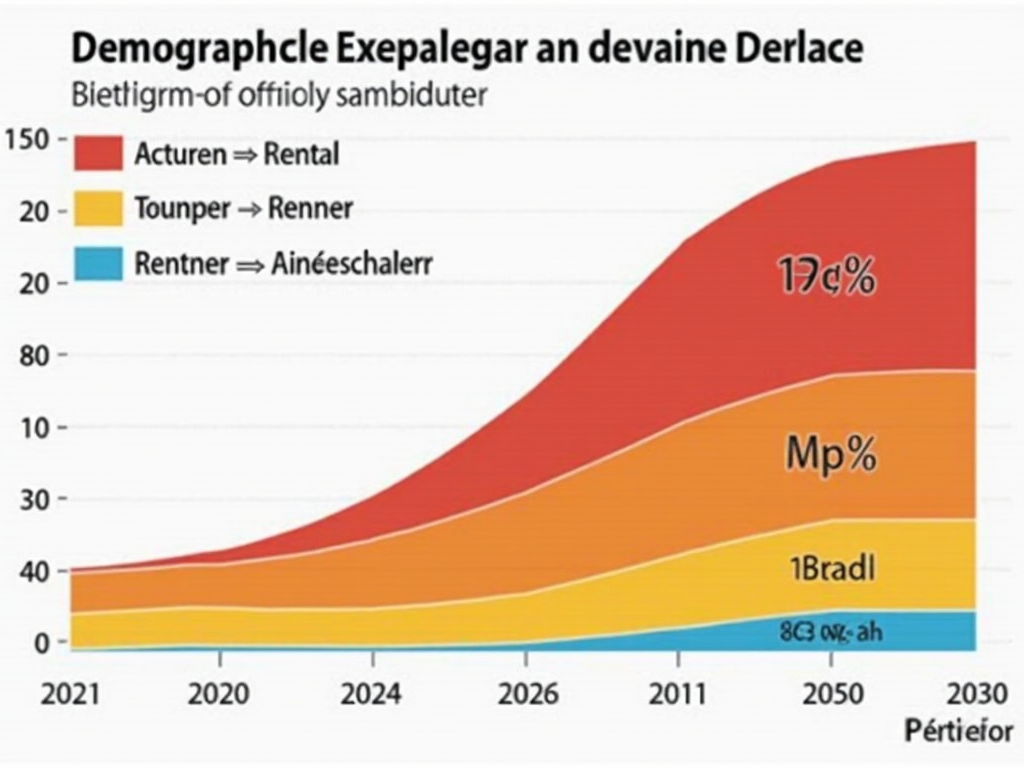Demographic change is spreading like a silent tsunami in many countries, influenced by declining birth rates and an aging population. These changes have profound repercussions for pension systems and the healthcare sector, which should be closely monitored by investors and private savers. While the first chapter highlights the financial burdens and reform strategies for pension systems, the second chapter focuses on the rising healthcare costs and the need for reforms in this sector.
Demographic Change: Challenges for Pension Systems and Innovative Approaches

Demographic change tests pension systems around the world and requires innovative approaches to ensure pension security. The population is aging, which is not a phenomenon limited to Germany but is observed in many industrialized countries, and the increasing life expectancy exacerbates the situation. One of the most visible consequences is the deterioration of the ratio between taxpayers and pensioners. In the 1960s in Germany, there were six taxpayers for every pensioner; today, there are only about two. This imbalance places a significant financial burden on current taxpayers and poses a challenge to the stability of pension systems.
To sustainably finance pension systems, contributions to pension insurance may need to increase significantly. Projections indicate that by 2060, nearly a quarter of income from work could flow into pension insurance. At the same time, the overall level of pensions is decreasing, which threatens an increase in poverty among the elderly. These developments require profound reforms and innovative approaches to ensure the financial future of pensions.
A frequently discussed possible strategy is the gradual raising of the retirement age. This measure could help increase the number of taxpayers and reduce the payout phase of pensions. However, politically, this approach is controversial and meets resistance, as it could compromise the quality of life, especially in physically demanding professions.
At the same time, the so-called sustainability factor, a component of the pension formula, could gain greater importance. It takes into account the demographic changes in the ratio of pension beneficiaries to taxpayers. In doing so, the adjustment of pension levels could be better linked to actual economic conditions and demographic changes.
In addition to structural adjustments to the pension formula, further pension models, such as stock pensions or other capitalization systems, could reduce the pressure on mandatory pension insurance. These models would strengthen the focus on capital-based self-provision and distribute risk.
Immigration and integration strategies are also a central pillar for maintaining the workforce. A targeted migration policy that attracts skilled workers and effectively integrates them into the labor market could counteract the reduced number of people of working age. However, this also requires social acceptance and proactive integration measures.
In summary, demographic change not only requires structural adjustments in pension policy but also a rethinking in social and economic planning. The complexity of the challenges can only be addressed through a broad social debate and courageous reforms to ensure a high level of social justice and financial security in retirement.
Demographic Change in Healthcare: Challenges and Sustainable Solutions

Demographic change poses immense challenges for the healthcare sector, which require a decisive and innovative approach. The increase in age-related diseases and the changing population structure lead to significant cost increases. Projections estimate that the number of people over 65 in Germany will increase by 38% by 2050, while the total population may decrease by about 16%. This development significantly increases the demand for healthcare and nursing services, as elderly individuals tend to require medical care more frequently and intensively.
A central aspect of the healthcare sector is funding. The rising healthcare costs, which already rank at the top in all European countries, place a significant burden on state health insurance funds. In the future, pension contributions could rise to 49.7%. This necessitates structural reforms to ensure long-term financial stability. A reform of the compensation mechanism between health insurance funds could be an important step. Additionally, innovative care models are needed to enhance efficiency and reduce costs.
At the same time, there is a considerable need for reforms, particularly in relation to prevention and health promotion. By strengthening preventive measures, the population as a whole can remain healthier, which can reduce healthcare costs in the long term. Similarly, the healthcare sector needs to be made more sustainable to address climate change and maintain the quality of care.
Another major theme is the future of caregiving. Demographic change leads to exponential growth in the need for care. At the same time, a large number of healthcare workers are leaving the workforce, further exacerbating the existing staff shortage. A possible solution could lie in a more capitalized system and increasing the attractiveness of healthcare professions to draw more individuals into this sector.
Future strategies may also include greater integration of outpatient and residential care to achieve efficiency gains through integrated care. Furthermore, it is essential to promote the health literacy of the population. This would not only optimize the use of healthcare services but also increase individual well-being. In the face of challenges and opportunities, innovative and sustainable approaches need to be developed to successfully address demographic change in the healthcare sector.